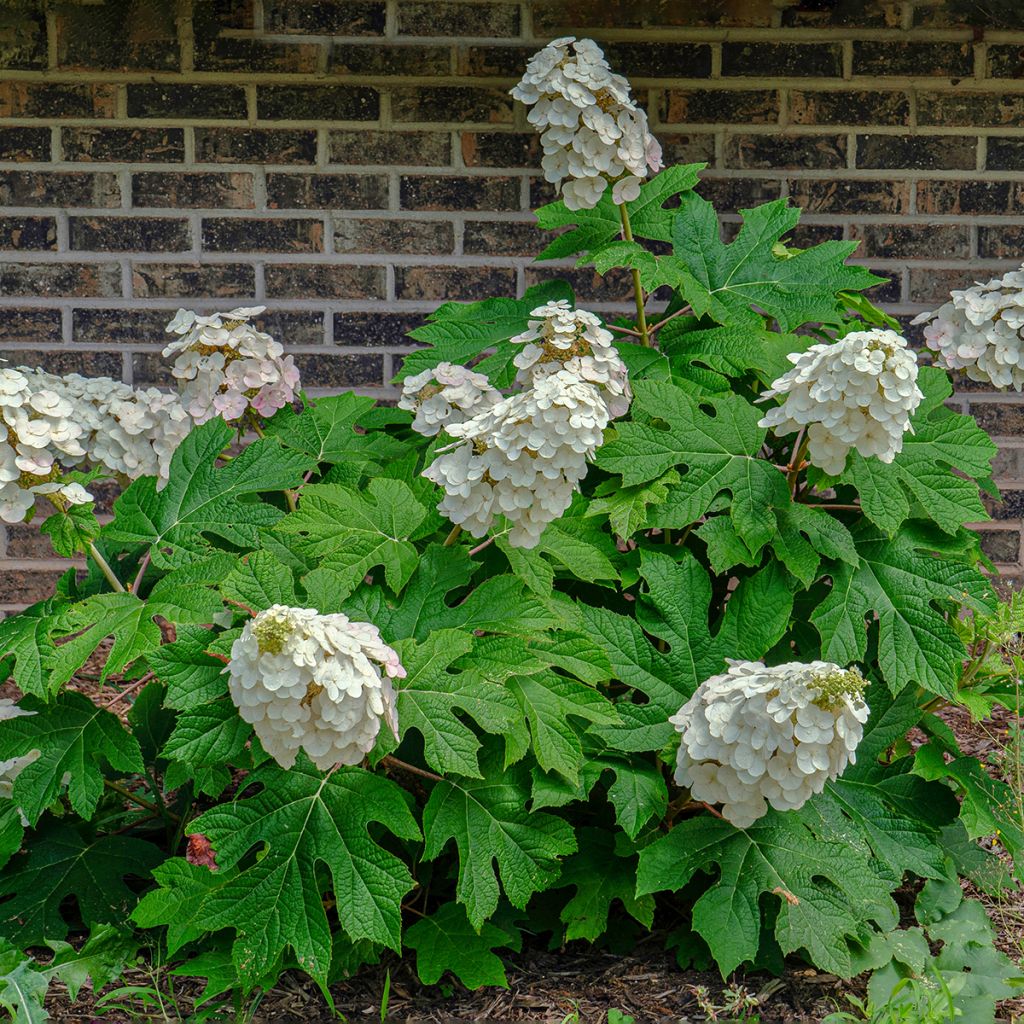

Hydrangea quercifolia Alice
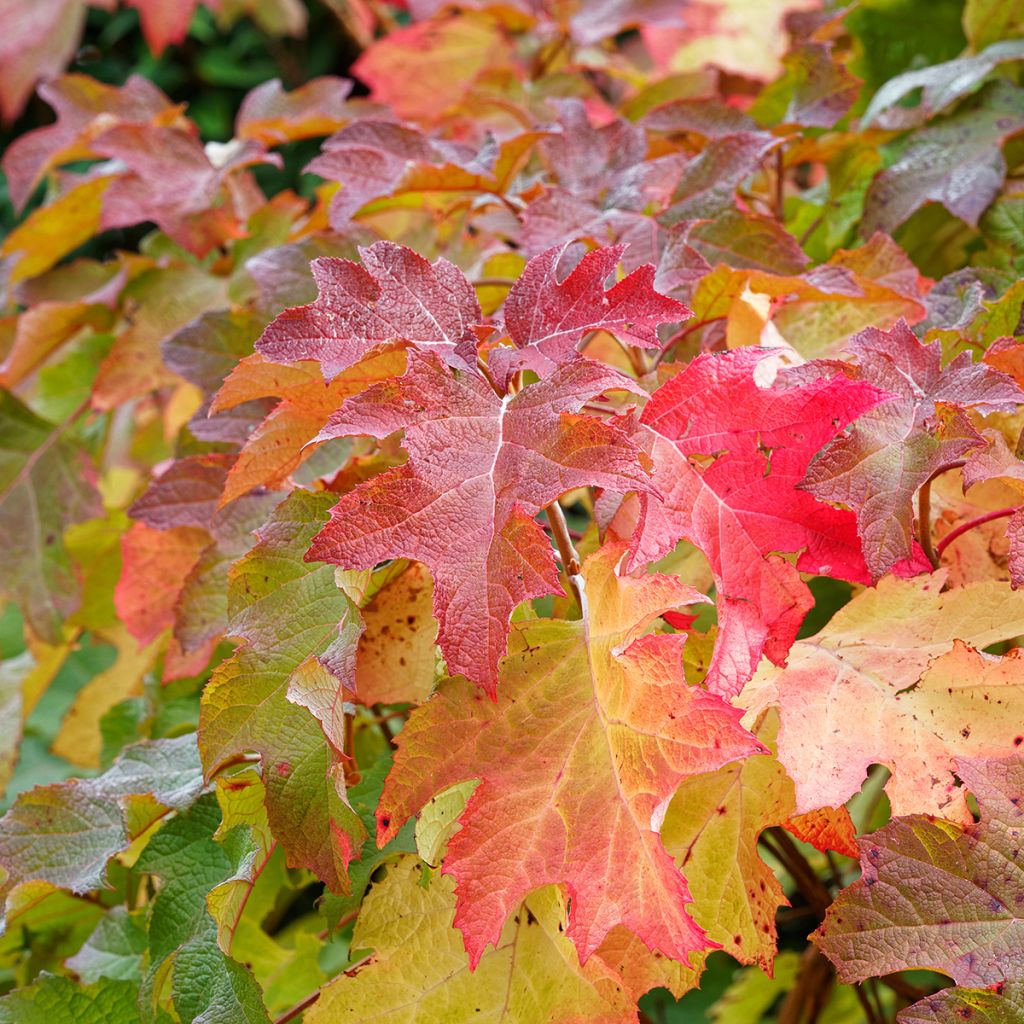

Hydrangea quercifolia Alice
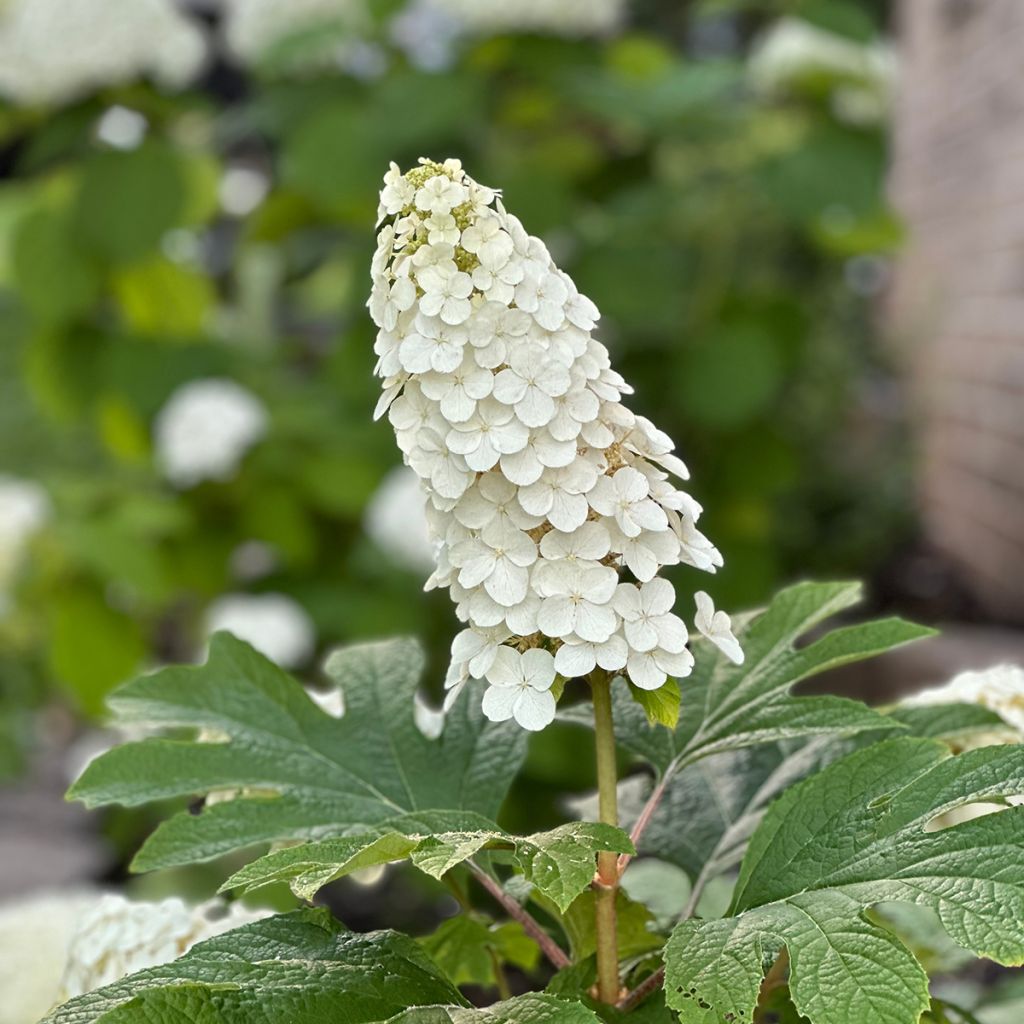

Hydrangea quercifolia Alice


Hydrangea quercifolia Alice
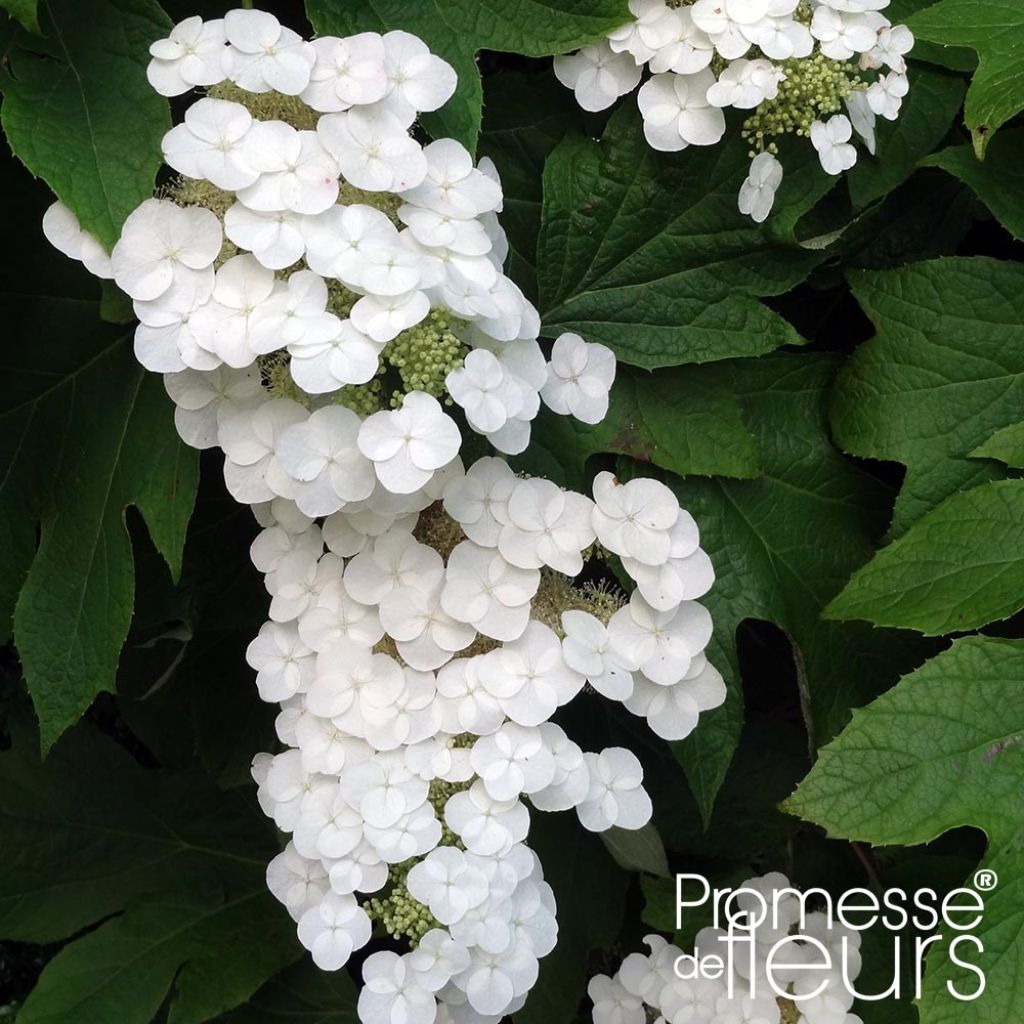

Hydrangea quercifolia Alice
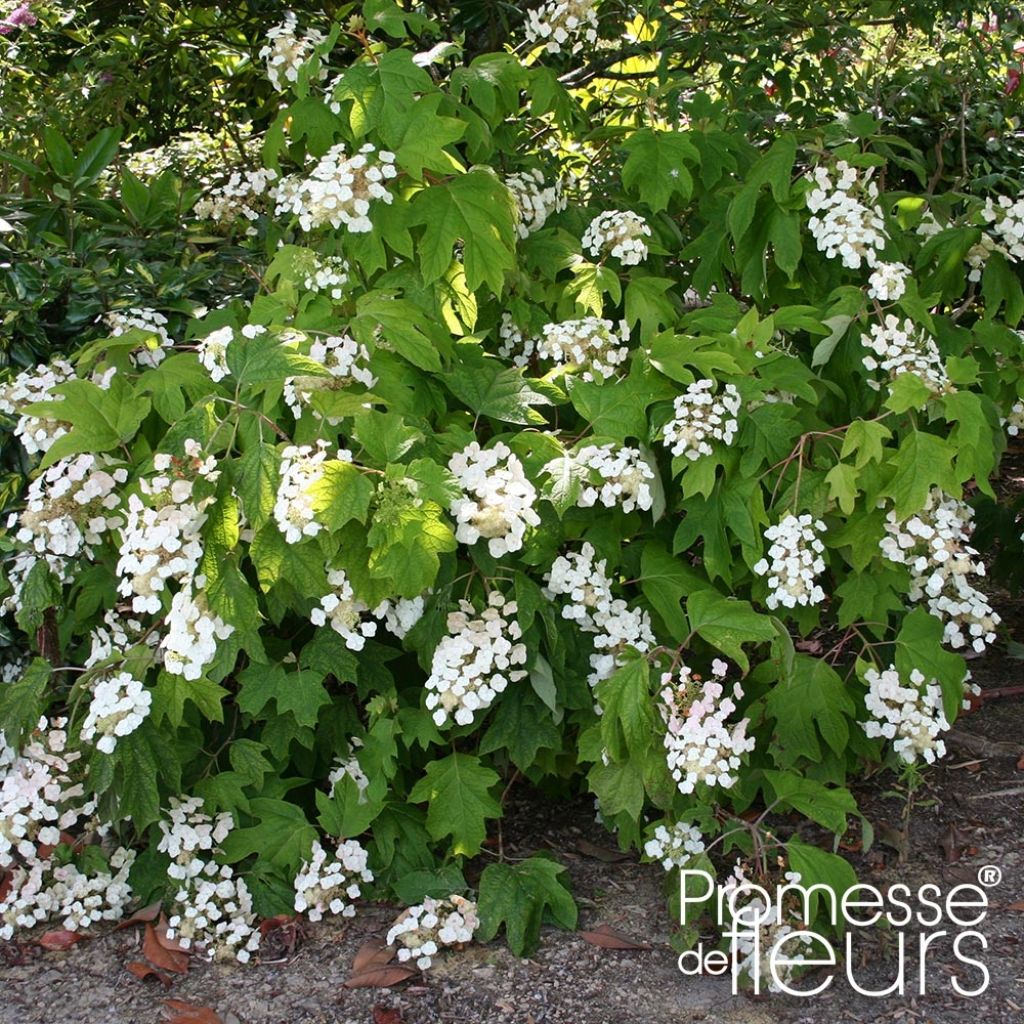

Hydrangea quercifolia Alice
Hydrangea quercifolia Alice
Hydrangea quercifolia Alice
Oakleaf Hydrangea, Oak-leaved Hydrangea
Very satisfied with this purchase. Bushes with numerous branches. Remarkable quality.
Julie, 03/05/2022
Special offer!
Receive a €20 voucher for any order over €90 (excluding delivery costs, credit notes, and plastic-free options)!
1- Add your favorite plants to your cart.
2- Once you have reached €90, confirm your order (you can even choose the delivery date!).
3- As soon as your order is shipped, you will receive an email containing your voucher code, valid for 3 months (90 days).
Your voucher is unique and can only be used once, for any order with a minimum value of €20, excluding delivery costs.
Can be combined with other current offers, non-divisible and non-refundable.
Home or relay delivery (depending on size and destination)
Schedule delivery date,
and select date in basket
This plant carries a 24 months recovery warranty
More information
We guarantee the quality of our plants for a full growing cycle, and will replace at our expense any plant that fails to recover under normal climatic and planting conditions.

Would this plant suit my garden?
Set up your Plantfit profile →
Description
Hydrangea quercifolia 'Alice' is a hydrangea with oak-like leaves that will charm with its beautiful vigour and the lovely pale pink colour that its flower panicles take on before fading. Its attractive foliage is composed of leaves that distinguish themselves by their beautiful size, their well-lobed contours, and their great persistence. They develop colour later – coppery orange rather than red – and can even remain partly on the branches if the winter is mild. Its fine stature makes it suitable for large shrub masses. Hydrangea quercifolia is less demanding than other hydrangeas in terms of exposure and soil, as long as it is well drained and without excess lime.
Hydrangea quercifolia, from the Hydrangeaceae family, is originally native to the southwestern United States, particularly the Mississippi valley. It is found growing on cliffs, in damp woods, ravines and on the banks of rivers, from Georgia to Louisiana via Florida. It is a large deciduous shrub, which can reach 4 m (13 ft) in height in its natural habitat and, by producing shoots, can grow up to 3.5 m (11 ft 6 in) wide. It is characterised by a deep root system and large lobed leaves, whose appearance can resemble oak leaves. It is appreciated for its superb autumn colours and its flowering in large white and erect panicles composed of small powdery fertile flowers surrounded by larger fertile florets. In the garden, it is one of the easiest hydrangeas to grow: it is hardy below -20 °C (-4 °F), tolerates a little lime in the soil, and copes with heat and occasionally dry soils in summer if they are deep.
The 'Alice' cultivar has a bushy, ramified and rounded habit and rather rapid growth: it is a vigorous cultivar that will reach around 2.5 m (8 ft 2 in) in all directions at the age of 10 years, up to 3 m (9 ft 10 in) if the growing conditions are optimal. One of the major assets of this variety is the unusual colour of its flowers. These begin to develop on the old wood in June-July, depending on the climate, and consist of erect, pyramidal inflorescences, 25 to 35 cm (9.8 to 13.8 in) long. Each is composed in the centre of small rare fertile cream-white flowers with prominent stamens contrasting with fertile flowers of a decent size, in the shape of white stars. These inflorescences tint pink as they age. Its young spring and summer leaves are covered with a whitish down in spring. They unfold into large leaves 16-20 cm (6.3-7.9 in) long cut into 5 to 7 deep lobes, with coarsely dentate, dark green edges. In October, they take on beautiful orange hues and are slow to fall to the ground. The bark of this variety peels off over time, revealing a new and shiny cinnamon-coloured wood, which is decorative in winter.
Hydrangea quercifolia 'Alice' appreciates slightly sunny exposures that accentuate its autumnal colours and increase the number of its flowers, such as the light filtered by the foliage of trees or even shade in a hot climate. It can be used in clumps, isolated in a small garden or at the bend of a path, or in a free hedge, but does not tolerate pot culture well. It can be combined with other hydrangeas, but also with Nandina, Mexican oranges, Purple Berberis and deciduous viburnums (snowball, Eskimo, Charles Lamont, etc.), or even with seringas and lilacs.
Report an error about the product description
Hydrangea quercifolia Alice in pictures
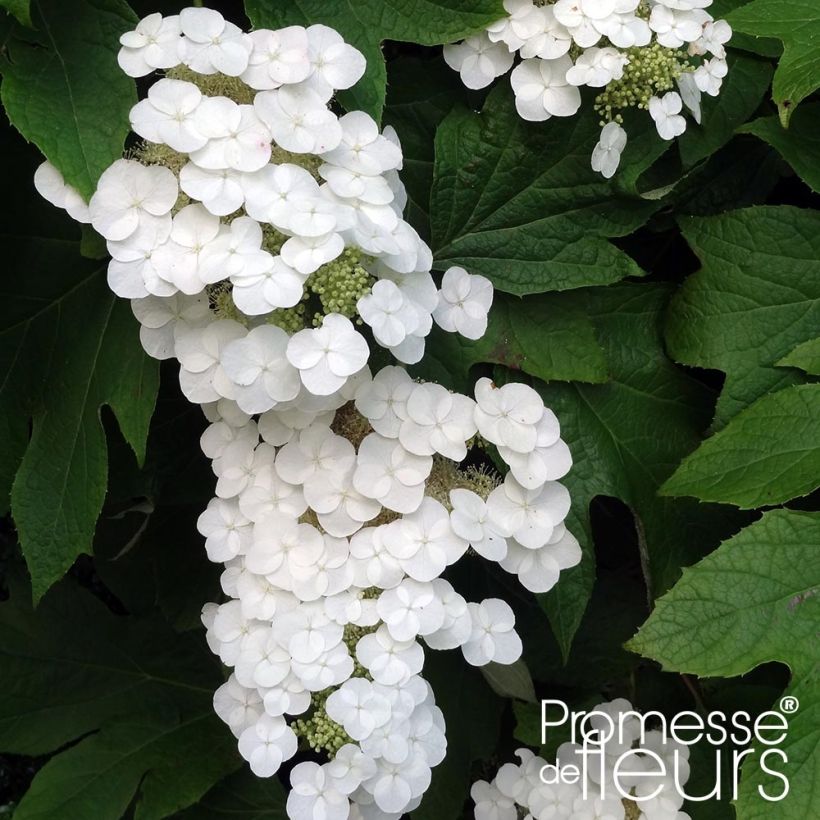

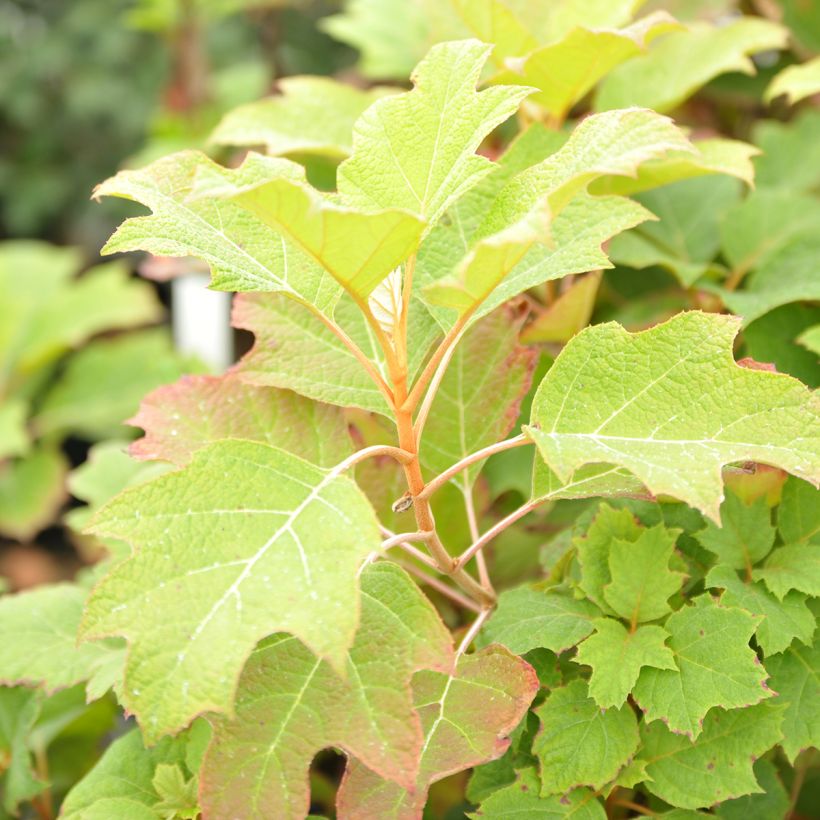

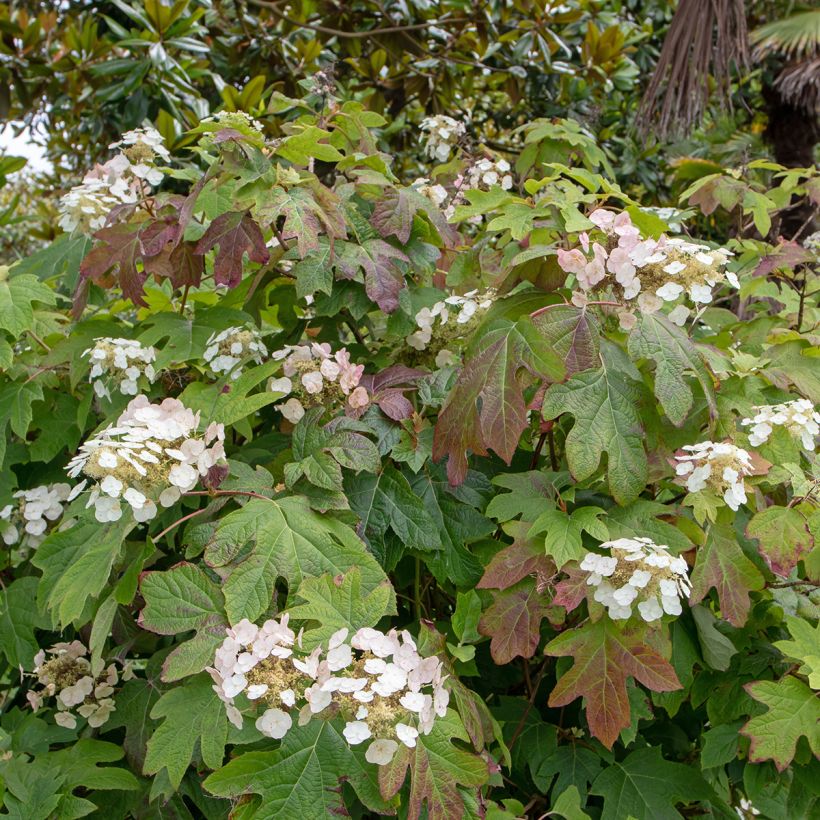

Plant habit
Flowering
Foliage
Botanical data
Hydrangea
quercifolia
Alice
Hydrangeaceae
Oakleaf Hydrangea, Oak-leaved Hydrangea
Cultivar or hybrid
Planting and care
This hydrangea requires a sunny exposure to encourage autumn colours, but fears overly scorching exposures: morning sun or the shade of a large tree during the hottest hours are preferable, particularly in very sunny and hot regions. It prefers a humus-rich, neutral to acidic soil, but tolerates the presence of limestone in the soil better than other hydrangeas after careful planting. However, it is not very tolerant of compacted and poorly drained soils that reduce its hardiness and hinder the development of its roots, which can descend deeply into the soil. Prepare a pit filled with a mixture of leaf compost and loose garden soil. When planting, install it in deeply worked soil. A good base fertiliser (horn or dehydrated blood) will aid your young plant's recovery and nourish it without risk of burning. If your soil tends to be very dry in summer, mix a water retainer with the soil when backfilling the planting hole and provide a watering basin on the surface. Once well established, this Hydrangea requires absolutely no watering in summer. At the end of summer, we advise you not to cut off the dry inflorescences that will protect the terminal shoots of the branches in winter: you should cut off all the dry flowers at the end of February or on the first summer days. Oakleaf hydrangeas have good resistance to cold, but very young plants whose branches are still tender (not lignified) are more sensitive.
Planting period
Intended location
Care
-
, onOrder confirmed
Reply from on Promesse de fleurs
Haven't found what you were looking for?
Hardiness is the lowest winter temperature a plant can endure without suffering serious damage or even dying. However, hardiness is affected by location (a sheltered area, such as a patio), protection (winter cover) and soil type (hardiness is improved by well-drained soil).

Photo Sharing Terms & Conditions
In order to encourage gardeners to interact and share their experiences, Promesse de fleurs offers various media enabling content to be uploaded onto its Site - in particular via the ‘Photo sharing’ module.
The User agrees to refrain from:
- Posting any content that is illegal, prejudicial, insulting, racist, inciteful to hatred, revisionist, contrary to public decency, that infringes on privacy or on the privacy rights of third parties, in particular the publicity rights of persons and goods, intellectual property rights, or the right to privacy.
- Submitting content on behalf of a third party;
- Impersonate the identity of a third party and/or publish any personal information about a third party;
In general, the User undertakes to refrain from any unethical behaviour.
All Content (in particular text, comments, files, images, photos, videos, creative works, etc.), which may be subject to property or intellectual property rights, image or other private rights, shall remain the property of the User, subject to the limited rights granted by the terms of the licence granted by Promesse de fleurs as stated below. Users are at liberty to publish or not to publish such Content on the Site, notably via the ‘Photo Sharing’ facility, and accept that this Content shall be made public and freely accessible, notably on the Internet.
Users further acknowledge, undertake to have ,and guarantee that they hold all necessary rights and permissions to publish such material on the Site, in particular with regard to the legislation in force pertaining to any privacy, property, intellectual property, image, or contractual rights, or rights of any other nature. By publishing such Content on the Site, Users acknowledge accepting full liability as publishers of the Content within the meaning of the law, and grant Promesse de fleurs, free of charge, an inclusive, worldwide licence for the said Content for the entire duration of its publication, including all reproduction, representation, up/downloading, displaying, performing, transmission, and storage rights.
Users also grant permission for their name to be linked to the Content and accept that this link may not always be made available.
By engaging in posting material, Users consent to their Content becoming automatically accessible on the Internet, in particular on other sites and/or blogs and/or web pages of the Promesse de fleurs site, including in particular social pages and the Promesse de fleurs catalogue.
Users may secure the removal of entrusted content free of charge by issuing a simple request via our contact form.
The flowering period indicated on our website applies to countries and regions located in USDA zone 8 (France, the United Kingdom, Ireland, the Netherlands, etc.)
It will vary according to where you live:
- In zones 9 to 10 (Italy, Spain, Greece, etc.), flowering will occur about 2 to 4 weeks earlier.
- In zones 6 to 7 (Germany, Poland, Slovenia, and lower mountainous regions), flowering will be delayed by 2 to 3 weeks.
- In zone 5 (Central Europe, Scandinavia), blooming will be delayed by 3 to 5 weeks.
In temperate climates, pruning of spring-flowering shrubs (forsythia, spireas, etc.) should be done just after flowering.
Pruning of summer-flowering shrubs (Indian Lilac, Perovskia, etc.) can be done in winter or spring.
In cold regions as well as with frost-sensitive plants, avoid pruning too early when severe frosts may still occur.
The planting period indicated on our website applies to countries and regions located in USDA zone 8 (France, United Kingdom, Ireland, Netherlands).
It will vary according to where you live:
- In Mediterranean zones (Marseille, Madrid, Milan, etc.), autumn and winter are the best planting periods.
- In continental zones (Strasbourg, Munich, Vienna, etc.), delay planting by 2 to 3 weeks in spring and bring it forward by 2 to 4 weeks in autumn.
- In mountainous regions (the Alps, Pyrenees, Carpathians, etc.), it is best to plant in late spring (May-June) or late summer (August-September).
The harvesting period indicated on our website applies to countries and regions in USDA zone 8 (France, England, Ireland, the Netherlands).
In colder areas (Scandinavia, Poland, Austria...) fruit and vegetable harvests are likely to be delayed by 3-4 weeks.
In warmer areas (Italy, Spain, Greece, etc.), harvesting will probably take place earlier, depending on weather conditions.
The sowing periods indicated on our website apply to countries and regions within USDA Zone 8 (France, UK, Ireland, Netherlands).
In colder areas (Scandinavia, Poland, Austria...), delay any outdoor sowing by 3-4 weeks, or sow under glass.
In warmer climes (Italy, Spain, Greece, etc.), bring outdoor sowing forward by a few weeks.
































